Objective
The article discusses how Business Continuity Management or BCM can be implemented and integrated into Nursing Homes. As the roles and functions of nursing homes may differ from region to country, the nursing home's core mission remains fairly unchanged. A nursing home in Singapore is used to provide the context in this blog.
Any BCM implementation based on the ISO 22301 BCMS standard starts with "Understanding Your Organisation". This is where we provide an understanding of the "Nursing Homes" in Singapore and the functionality within a typical nursing home.
What is a Nursing Home?
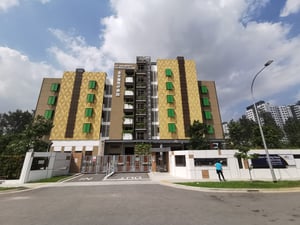 Nursing homes provide residential care for elderly or disabled people. Nursing homes may also be referred to as old people's homes, care homes, rest homes, convalescent homes, convalescent care, skilled nursing or long-term facilities.
Nursing homes provide residential care for elderly or disabled people. Nursing homes may also be referred to as old people's homes, care homes, rest homes, convalescent homes, convalescent care, skilled nursing or long-term facilities.
Often, these terms have slightly different meanings to indicate whether the institutions are public or private and whether they provide mainly assisted living, nursing care and emergency medical care. Nursing homes are used by people who do not need to be in a hospital but cannot be cared for at home. The nursing home facility nurses are responsible for managing the patient's medical needs and being in charge of other employees, depending on their ranks.
Most nursing homes have nursing aides and skilled nurses on hand 24 hours a day, albeit in far lesser quantities after office hours.
Source: https://en.wikipedia.org/wiki/Nursing_home_care
The Nursing Homes operating in Singapore can be found in the Directory of Nursing Home in Singapore
Organisation Structure of Nursing Home
A typical Nursing Home can have the following structure.
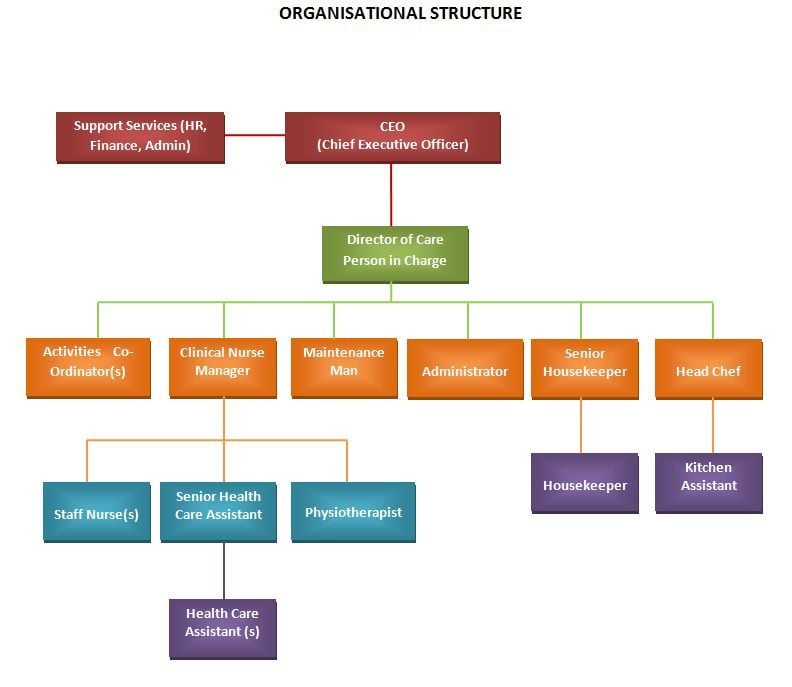
Figure 1: Organisation Chart of a Nursing Home
Source: http://www.newbrooknursinghome.ie/organisational-structure/
Nursing homes require many individuals to run the facility safely and efficiently. A sound organizational structure helps employees of the centre know who to answer when providing patient care. In most Nursing Homes, some appointees include the owner and the administrator, directors and front-line workers.
[1] Owner and Administrators
The head of the nursing home's organizational structure is the individual owner himself. If the facility is owned by a company, the owner of that company, or the company itself, is sometimes listed as the head. Below the owner is the nursing home administrators, including the director of nursing and rehabilitative services.
[2] Directors
Typically below or at the same level as the directors of medical services are the nursing home's directors of non-medical services. These include the heads of the business, admissions, dietary, kitchen, social services and recreation departments. The assistant director of nursing and charge nurse is usually located below the department heads but above other nursing home employees, such as Registered Nurses (RNs) or Licence Practical Nurse (LPNs).
[3] Front Line Workers

Finally, the front-line workers come after the various department heads, such as doctors, nurse practitioners, nurses, certified nursing assistants, social workers, dietitians, housekeepers, maintenance employees, and physical, occupational, and speech therapists.
Source: https://careertrend.com/facts-7378705-list-organization-structure-nursing-home.html
Reading "Business Continuity Management: What is My Role?" may help you understand the BCM roles within the nursing home.
Nursing Home Critical Functions
For Nursing Homes, Critical Business Functions (CBFs) are defined as: “where the loss of delivery would endanger finances, damage the reputation of the Nursing Home in the eyes of its clients, or seriously affect its ability to comply with legislation.” Some of a Nursing Home's critical functions could include:
.jpg?width=300&name=AIC%20BCM%202%20(2).jpg)
Nursing Services
- Medication Administration
To administer medicine to residents. - Direct Nursing Care
To provide primary nursing care such as showering, toilet aid, feeding, and wound care to residents - Meals Preparation and Delivery
To ensure that the suitable meals catered to a resident's specific needs are delivered to all residents at the correct times of the day - Nursing Assessment
To perform an initial nursing assessment right after the patient is admitted to the Nursing Home. - Nursing documentation
To conduct nursing documentation of all nursing care rendered to residents - Discharge Procedure
To perform all discharge procedures, including follow-up for medical appointments, nursing discharge summary and community care follow-up. This includes urgent discharges that include the passing on of residents and arrangements for Next-of-Kins or NOK to bring back the body.  Caregiver Training
Caregiver Training
To train appointed caregivers (most likely a NOK) for continuity of care when residents are discharged from the Nursing Home.- Admission Procedure
To admit residents into the Nursing Home - Billing Procedure
To bill and charge for consumables and services rendered
Rehabilitation Services
- Individual Therapy Sessions
To Conduct 1-to-1 therapy sessions with residents - Group Therapy Sessions
To provide therapy for patients in a group setting. Typically, about six to eight at one time. - Admission Counselling
To provide counselling to residents (and their caretakers) on information such as service provided, charges and payment, appointment, transport, resident and client rights, home rules and regulations, emergency procedures and indemnity - Appointment Scheduling
To schedule appointments with the Residents
Facilities Management
- Facilities Maintenance
To maintain the Mechanical & Electrical (M&E) systems availability and critical utility services such as oxygen, water and electricity
Crises in Nursing Homes
Within Nursing Homes, a crisis could occur at any moment. A Crisis is a critical event that may impact an organization's reputation or ability to operate. However, it does not deny access to facilities and infrastructure. Typically, crises relating to nursing homes can include:
- Loss of life (Residents, Visitors, Staff);
- Economic loss, and
- Reputation loss.
Disasters in Nursing Homes
Like crises, disasters can hinder an organization. However, in such events, access to facilities and infrastructure is denied.
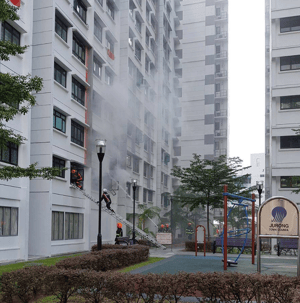 Disasters relating to Nursing homes can include but are not limited to:
Disasters relating to Nursing homes can include but are not limited to:
- Fires;
- Floods or other types of severe weather-related conditions;
- Pandemic Diseases, and
- Denial of access or damage to facilities.
 If you find crisis and disaster confusing, the article "What is Crisis Management Vs Business Continuity Management? Often Confused" may help you understand the concept better.
If you find crisis and disaster confusing, the article "What is Crisis Management Vs Business Continuity Management? Often Confused" may help you understand the concept better.
Assumptions for Nursing Homes BC Planning
The business continuity plan will cover two scenarios, namely;
- For the first 24 hours following an incident and
- For two to seven days following an incident. (Recovery plans needed to cover
more extended periods would usually be developed after the completion of this initial project.
Detailed Planning Assumptions
Once the assumptions are agreed upon in principle, the following detailed assumptions will be taken into account when developing the plan:
- In the event of a significant incident, Nursing Home premises would be out of use for
more than seven days. - If a less significant disruption occurs, some existing Nursing Home premises will remain in use.
- Where a generator is unavailable, loss of electricity supply across a region could last up to 3 days.
- The mains water supplies and sewerage services may be interrupted for up to 3 days.
- According to the Ministry of Health, Singapore, in a pandemic (which depends heavily on the DORSCON), 25%—30% of staff could be off work at any time. This will include those who are sick, those caring for others, and the ‘worried well’ who are simply too cautious about coming to work. On average, people will be absent for up to 5 to 8 days, but some may never return.
BCM Planning Methodology
 Back to: This following blog will provide the "Planning Steps for Implementing BCM for Nursing Home" - click the icon to read more. You will have a good overview of the steps to be taken and, lastly, what competency you should have with funding from the Singapore government.
Back to: This following blog will provide the "Planning Steps for Implementing BCM for Nursing Home" - click the icon to read more. You will have a good overview of the steps to be taken and, lastly, what competency you should have with funding from the Singapore government.
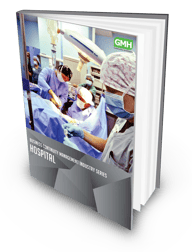
Additional Readings
You may want to read this related BCM series, " An Industry Guide to Business Continuity Management for Hospitals"
How To Be Competent and Where Do I Start?
As this blog is set in the context of a typical Singapore Nursing Home, there is a provision for training aligned to the planning methodology and approved as one of the key Singapore Workforce Skills Qualifications (WSQ) and SkillFuture Funding.


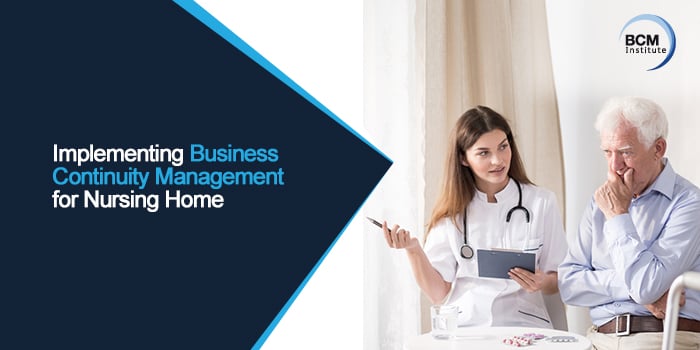
![[WSQ] Singapore Workforce Skills Qualification BCM Course Catalog](https://no-cache.hubspot.com/cta/default/3893111/417125a5-956d-439c-8b2a-da85fd2f696a.png)
![[BL-3-Catalog] What Specialist Level Blended Learning Courses that are Available?](https://no-cache.hubspot.com/cta/default/3893111/4b22a53c-6e3e-4b9e-8c2a-888423f1d26c.png)
![[BL-5-Catalog] What Expert Level Blended Learning Courses that are Available?](https://no-cache.hubspot.com/cta/default/3893111/fe175db3-7f57-4636-bf09-e9a836aa5478.png)

